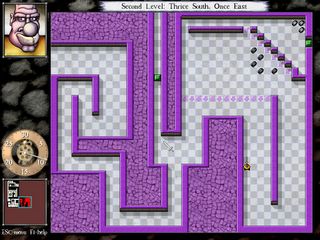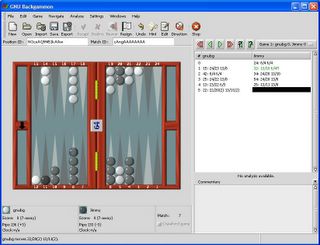Deadly Rooms of Death
Title: Deadly Rooms of Death
Author: Caravel Games
License: Freeware (Architects Edition), Commercial (Journey to Rooted Hold)
Website: http://www.caravelgames.com/
The premise of DROD is simple enough: kill all of monsters in each room of each level in the hold (the stronghold, castle type of hold). Your weapon is your trusty sword and your brains. DROD is a turn based puzzle game. You play the indomitable Beethro Budkin. Each turn, you can move one square in any of eight directions or swing your sword 45 degrees. If your sword happens upon a monster, dead it dies. After your move, each of the monsters gets to move. If one of them gets to you, you die.
The key to game is learning the movement rules for each of various monsters. The simple roaches just come straight at you. The smarter goblins will try to attack you from behind. Each of their movement rules are deterministic, and you will need to understand them. If you allow the monsters to surround you, death will soon come. You do have some additional tools. My favorite is the mimic. Mimics are copies of Beethro and move in unison with you. They can help out in places you do not want to venture yourself.

Rooms contain walls to help you trap and isolate the monsters. Divide and conquer is usually the course to take. There are often doors and switches which open, close, or toggle these doors. You have to figure out the correct order to tap the switches to gain access to all of the monsters.
There are two versions of the game. The freeware Architects Edition was released in 2003. The commercial Journey to Rooted Hold was released earlier this year. DROD:JtRH has better graphics and adds several new monster types. Another addition is your nephew Halph. He follows you around and is useful at opening doors and getting in the way of the monsters. For some reason, they do not kill him. The JtRH version also contains a story which plays out as you complete the rooms and levels. The voice acting is a little corny at times, but adds a nice element to the game.
Both versions of DROD are massive in size. Each contains 25 levels. Each level contains 10 to 20 rooms to tame. The room design, variety, and pacing are very good. Some rooms are quite difficult, but I enjoyed the challenge. These are truly wonderful games. I hope everyone tries them. DROD:JtRH will probably be the best logic/puzzle game released this year.
There is a very active DROD community at www.drod.net. When DROD:AE was released, a level editor was included. Slightly over one hundred holds designed by various "architects" are available here. These holds are rated in both difficulty and quality. This makes finding holds which are more to your liking much easier. I wish more games had similar two axis rating systems for user made level sets. This site also contains a very intricate help system. It is ok to peek.
There is a 3D version of DROD:AE produced by TLK Games. I played the demo and was not impressed. The game plays better from a top down view 2D perspective.
Here is a review of DROD by another mathematician. In his review, he mentioned the possibility that the DROD is in fact NP-complete. Some time ago, minesweeper was shown to be NP-complete. I decided to give this a think. It did not take long to realize that any 3-SAT problem could be encoded as a DROD room. Here is an example.

The four switches correspond to the variables, and the connected 3-sets of doors correspond to the clauses. To order the gain access to the one roach and complete the room, you need to figure out which switches to tap and simultaneously open at least one door in each of the 3-sets. This amounts to solving a 3-SAT problem.




